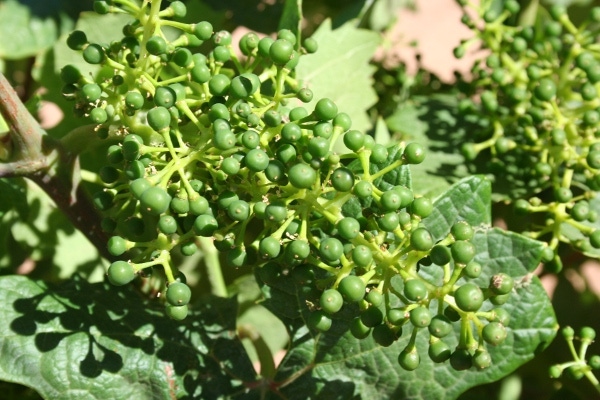
Spotted lanternfly - a new threat to grapes, stone fruit?
The invasive pest – spotted lanternfly, Lycorma delicatula - has been found for the first time in the U.S. (Pennsylvania), and western-state growers should be aware of the insect and its host range which includes grapes and stone fruit.Sugar content from lanternfly excretion can harbor mold growth which can result in stunted plant growth or even death.
November 10, 2014

A new invasive pest – spotted lanternfly, Lycorma delicatula - has been found for the first time in the U.S. (Pennsylvania), and western-state growers should be aware of the insect and its host range which includes grapes and stone fruit in case the insect marches West.
The exotic spotted lanternfly pest was recently detected in Berks County, Penn.
Surendra Dara, University of California farm advisor - San Luis Obispo, Santa Barbara, and Ventura counties, has gathered information on the pest which is shared below.
Western Farm Press thanks Dara for allowing us to share the information with readers.
Host range
According to Dara’s information compilation, the spotted lanternfly is actually not a fly, but a planthopper referred to as “spot clothing wax cicada” or “Chinese blistering cicada” in literature.
The pest belongs to the family Fulgoridae in the order Hemiptera. Fulgorids or members of the family Fulgoridae are moderate to large planthoppers generally referred to as lanternflies due to the inflated front portion of the head that was thought to be luminous.
Spotted lanternfly is regarded as a poisonous insect in Chinese medicine and used for relief from swelling.
Spotted lanternfly is native to China and found in Southeast Asia. It was first reported in South Korea in 2006 and rapidly spread to different parts of the country.
Spotted lanternfly feeds on a variety of host plants including vines, fruit trees, ornamental trees, and woody trees. Apples, birch, cherry, dogwood, grapes, Korean Evodia, lilac, maple, poplar, stone fruits, and tree-of-heaven are among more than 70 species of hosts attacked by the pest.
Observations in South Korea suggests that spotted lanternfly appears to have a wider host range early in life as young nymphs, and a narrow range as they grow older, especially before egg laying. Choosing plants with toxic metabolites for egg laying is thought to be a mechanism of defense to protect from natural enemies.
Although grape vine does not have toxic metabolites like other hosts, spotted lanternfly showed a strong preference in studies conducted in South Korea. The sugar content of the host plant also appears to play a role in their choice with a preference for hosts containing high sucrose and fructose content.
Biology
Eggs are laid on tree trunks in ootheca (egg case) in groups of 30-50 and are covered in a yellowish brown waxy deposit. Eggs usually hatch during the early hours of the day. Waxy deposit disappears on old egg masses which look like brown seeds.
There are four nymphal instars. Nymphs have a black body. The first three instars have white spots while the fourth instar has red wing pads and upper body.
Nymphs start climbing up the trees after emergence and fall off when there is a physical obstacle or disturbance from wind or other factors and then climb up again.
Adult males are 20.5-22 mm (0.81-0.87 inches) long from head to the end of the folded wing and females are 24-26.5 mm (0.94-1.04 inches) long. Forewings are greyish with black spots in different patterns. Part of the hind wing is red with black spots and the rest is white and black.
Adults are weak flyers, but good hoppers. The head is black with piercing and sucking mouthparts. Life cycle is typically one generation per year. Spotted lanternfly overwinters as eggs.
Damage
Adults and nymphs feed on phloem tissues of foliage and young stems with their piercing and sucking mouthparts and excrete large quantities of liquid. Due to the sugar content of the liquid, plant parts covered with spotted lanternfly excretion harbor mold growth which could hinder plant growth or even result in death.
Management
Neonicotinoids, pyrethrins, and organophosphates are among the chemical insecticides effective against spotted lanternfly. Adults and 2nd-4th instar nymphs appear to be attracted to spearmint oil which could be used in their control.
Sticky traps used at the base of the tree trunks also appear as a good management strategy.
Parasitic wasp, Anastatus orientalis is reported to parasitize up to 69 percent of spotted lanternfly eggs in China. This egg parasitoid is considered a potential biocontrol agent for release against the spotted lanternfly in South Korea.
You May Also Like



